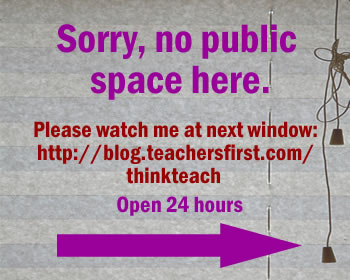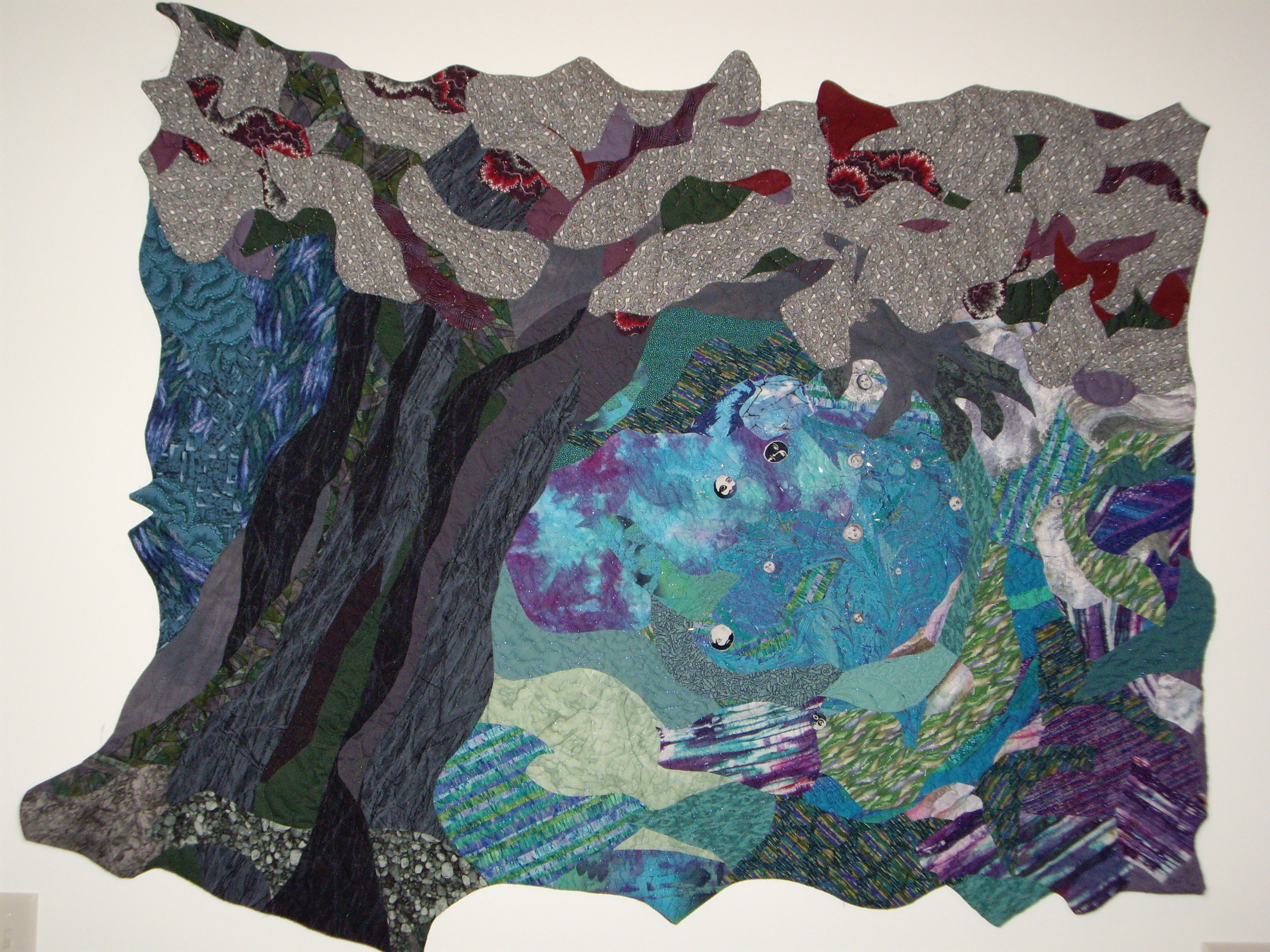NECC, Hats, and Invisibility Cloaks
Apologies to any readers who may not have been at NECC or even know what it is. This post is part of my personal reflection/debrief on the National Educational Computing Conference, my biggest annual opportunity for formal professional development.
I have concerns about the hats we wear — or the choice of invisibility cloaks — for the many forward-thinking educators who come into NECC with more than one role.
Feeling the Tension
When I arrived at NECC this year, it was with a sense of regret that scheduling had prevented me from attending this year’s EdubloggerCon (EBC), my favorite part of NECC ’07 in Atlanta. I followed enough of the blogflak about video and gleaned between the lines of ISTE’s policies about recordings, though, to know that Pearson’s videotaping at EBC was a hot issue. I also read and commented on pre-conference discussion on the NECC Ning regarding “commercial” postings there. A conversation with friend Jim Gates on NECC day 3 was the third time I felt it: there is a stigma attached to any role or affiliation that makes a NECC attendee or presenter “unpure.”
Reflections
As a 27 year teacher who went over to the “dark side” two years ago by switching my moonlighting job to a full time job, I am aware that no modifier I can include in the description of my role running TeachersFirst can erase the stigma; “free,” “ad-free,” “service,” “non-profit,” “noble,” even “saintlike” would be inadequate. If I choose to don my TeachersFirst hat publicly, I am tainted. Even worse, my ideas and contributions become suspect.
I would maintain that many respected contributors and organizers at EBC, NECC, and the most respected educational technology/ education reform collaborations have additional “hats.” Many individuals moonlight outside of their classrooms as consultants. Others have relationships with publishers, tool developers, or hardware/software companies. I have no problem with that. Teachers need the money, and the good ones have good ideas to share. Many in the “inner circles” at EBC or NECC are aware of the consulting/training that others do. I would suspect that there are quite a few other “hats” would show if everyone engaged in complete disclosure.
So what to do?
The dilemma: is it better to don an invisibility cloak (and remain quieter) or wear your hat? Aren’t we, as teachers forever (for that IS what I am– a teacher — no matter who pays me) , just as entitled to learn and grow out of genuine interest in the topics at hand? If NECC is a part of my personal learning network, what is the best way to participate: hat on head or invisibly? Are my ideas less valuable because I changed jobs? Should I refrain from speaking because I come from the dark side? I don’t think so.
I wear my name badge with job title. I tell people what I do when asked. I share ideas that others seem to value. But I must “be careful.” At what point do my ideas become suspect as an agenda instead of the honest contributions to the conversation they are meant to be? And at what point does the suspicion prevent me from learning as well?
I am frustrated at Pearson for raising the suspicion level of everyone by showing up to “document” EBC. I will admit that I am also suspicious of them, given the fact that they are not participants or teachers, just a commercial company videotaping. They recently launched a “foundation,” and that raises my antennae, too. Will their “foundation” status end up throwing more suspicion on genuine David (to Goliath)-sized non-profits such as my employer in the long run? Is their foundation an intentional invisibility cloak?
So I throw these question out ot the twitting-blogging-Ninging-gadgeting crowd from NECC and beyond:
1. Where and under what circumstances are teachers who wear multiple hats allowed to go for fully-engaged professional growth?
2. How would you prefer to see the hats that these teachers wear?
3. Is there a difference between moonlighting educators and those who retire and take that second career?
What are your thoughts?

 Some people pack bags or arrange for a kennel. I am fortunate enough to be preparing a presentation. See
Some people pack bags or arrange for a kennel. I am fortunate enough to be preparing a presentation. See 

 of years of women’s quilts as the underpinnings (sorry—pun) of my work, but I also deny them in pushing the medium, cutting through it, redefining its edges into non-edges and its techniques away from a rigid 10-stitch-per-inch standard.
of years of women’s quilts as the underpinnings (sorry—pun) of my work, but I also deny them in pushing the medium, cutting through it, redefining its edges into non-edges and its techniques away from a rigid 10-stitch-per-inch standard.

